 Artwork by Hartwig Kopp-Delaney
Artwork by Hartwig Kopp-Delaney
Our daily lives are filled with ceaseless tasks, appointments, obligations, and commitments. At times it is hard enough just fulfilling these responsibilities, let alone with a smile. Our brains are constantly processing incoming stimuli and with the increasing pace and demands of day to day life, our minds and bodies naturally need time to recuperate. We may think sleep is such a form of recuperation and rejuvenation, but for many of us, we are not getting enough rest or productive sleep each night.
With that in mind, it is essential for us in the 21st century more than ever before to learn what Alan Watts refers to as “The Art of Doing Nothing”. This way of being is exemplified in its simplest form in the practice of meditation; sitting quiet and still, watching thoughts drift through the mind’s eye like clouds in the sky. With practice, we can begin to carry this method of reflection outwards and onwards in our daily lives through mindfulness practices; a way of observing actions, reactions, ourselves, and others from a more centered plane of consciousness.
From this centered sense of self we may find ourselves less judgmental, more patient, and at times even more forgiving. This isn’t a quick fix to 24/7 perfect harmony though. This is a lifelong practice in which frequent failure to maintain this sense is expected. As such, when we find ourselves over attached to a situation or an outcome and becoming triggered negatively by an external stimulus, the practice of forgiving oneself for any response we may in hindsight deem as inappropriate becomes essential. Thus our spirituality becomes embodied in our every action and in our every moment rather than being a place that we retreat to when life becomes too hard or difficult.

Zen masters even go a step further, referring to a state of “no-mind” in which practitioners of meditation, mindfulness, and embodied spirituality learn to access a state of fluidity within themselves that is open to spontaneous intuition and creativity from a source beyond the scope of the individual’s standard capabilities. In the Tao Te Ching, Lao Tzu calls this “wu wei wu” or “action in inaction”.
In modern day lingo, we’d refer to this as being in the “zone” and examples can be seen in the sports world, in excellent conversationalists, and in the moments in which inspiration strikes an inventor of a revolutionary new product or idea. We find this state activated frequently in those who in striving for a goal reach a point in which they have exhausted their options and in surrendering expectations receive new insights in an “aha” lightbulb flash of a moment. No matter what we call it, “the art of doing nothing” is accessible to us all and strikes a balance between action and inaction; striving and surrender, in order to create a fertile soil for spontaneous creativity to blossom forth and manifest in our lives.
References
Bjorklund, D. F., & Pellegrini, A. D. (2010). Evolutionary perspectives on social development. In P. K. Smith & C. H. Hart (Eds.), The Wiley-Blackwell handbook of childhood social development, (Oxford, England: Wiley-Blackwell), pp. 64–81.
Dietrich, A. (2004). The cognitive neuroscience of creativity,Psychonomic Bulletin & Review,11, pp. 1011–1026.
Russ, S. (2003). Play and Creativity: developmental issues.Scandinavian Journal of Educational Research, 47(3), pp. 291–303.
Carruthers, P. (2002). Human creativity: its cognitive basis, its evolution, and its connection with childhood pretence. British Journal for the Philosophy of Science, 53 (2), pp. 225-249.
Written by guest author Christopher Shell
Christopher is a Maryland native, a yoga teacher, and a graduate student at Sofia University pursuing a M.A. in Transpersonal Psychology. His current research interest revolves around psychosomatic healing, esoteric anatomy, dreamwork, and psychedelics. In his spare time he enjoys doing yoga, writing poetry, and performing music.











Leave a comment